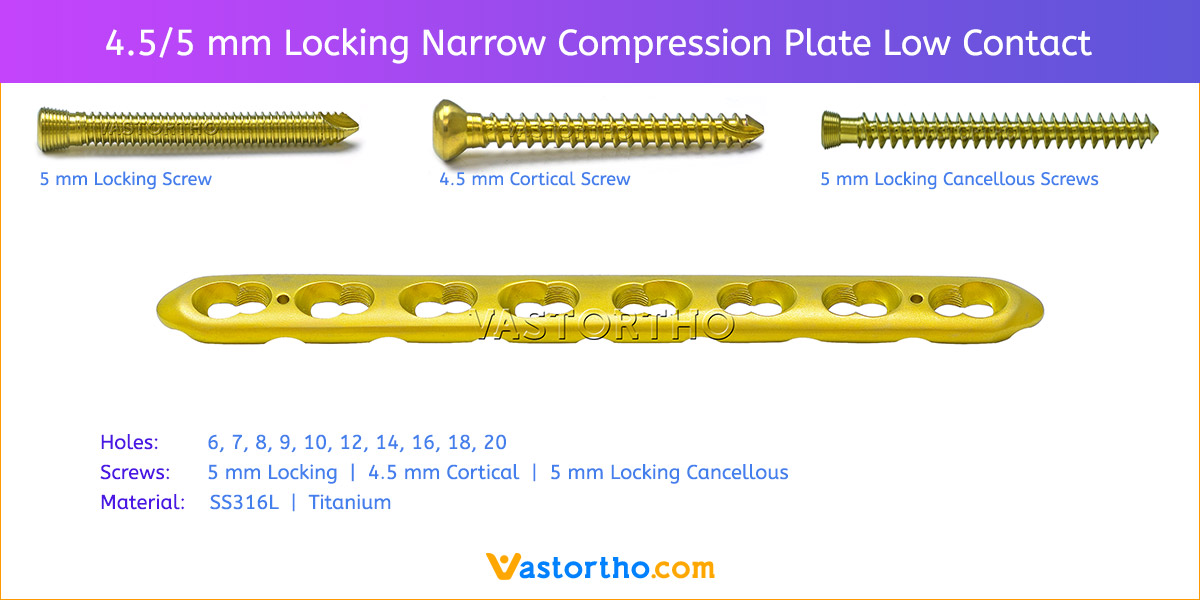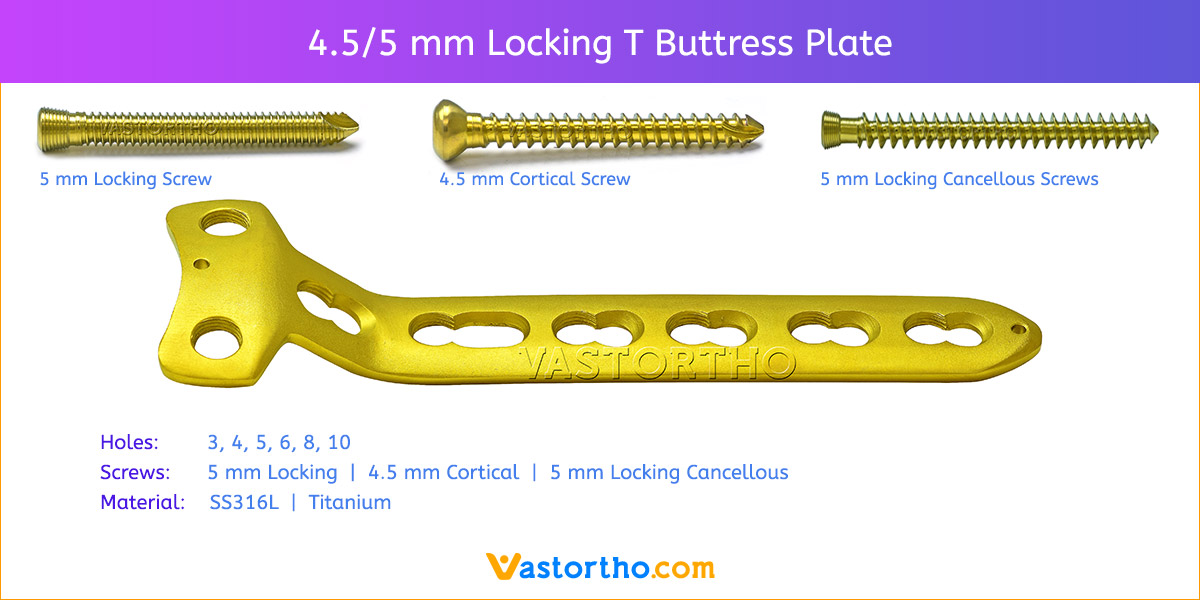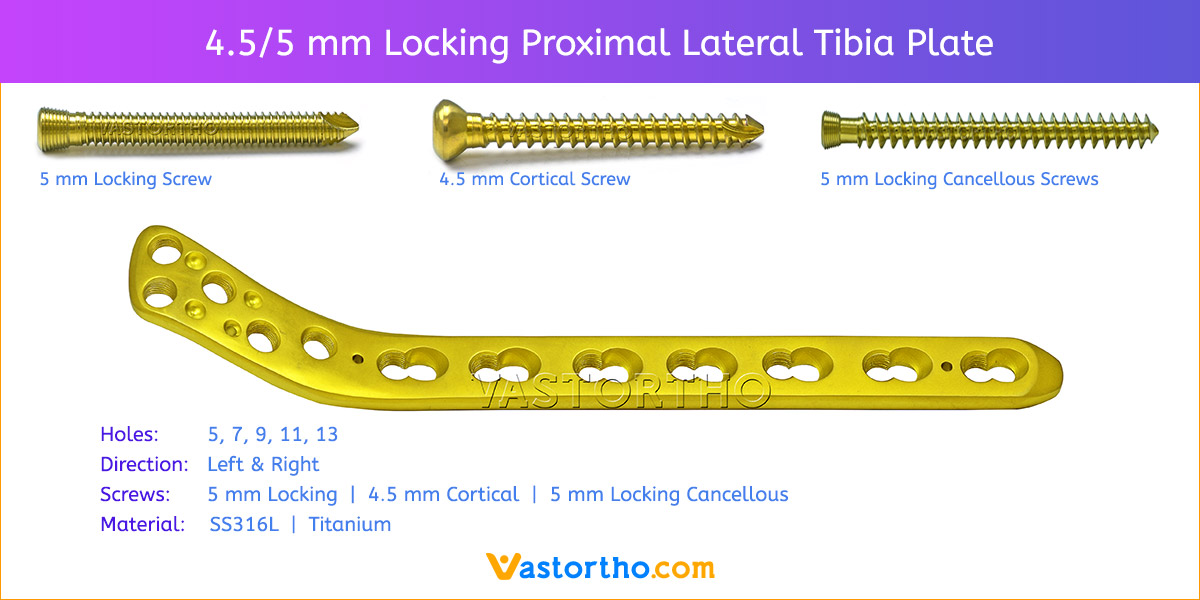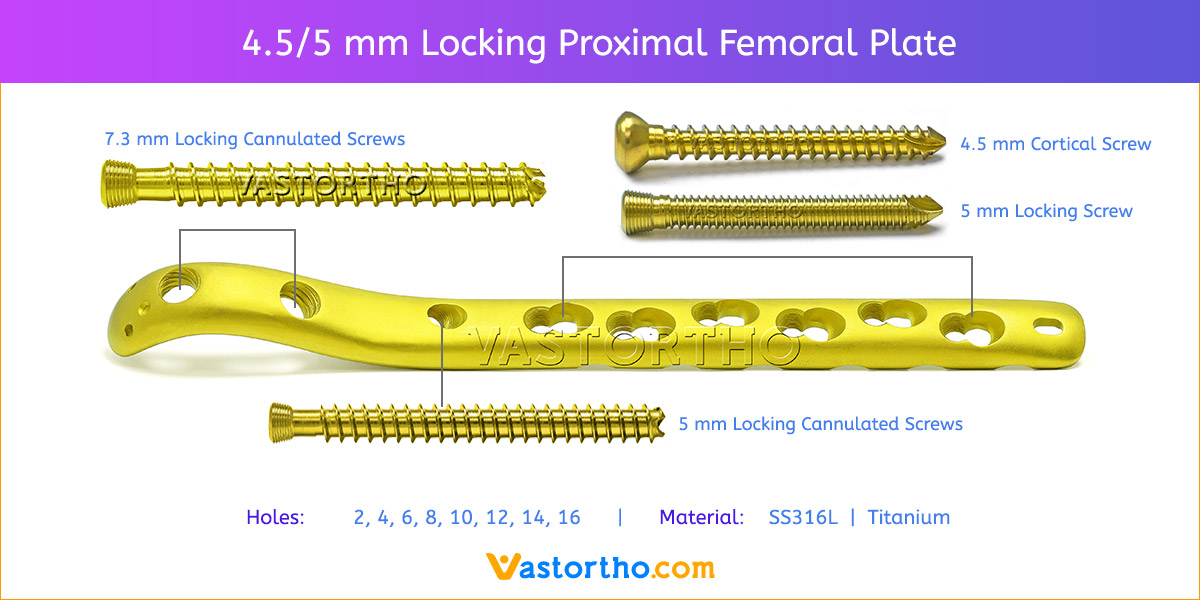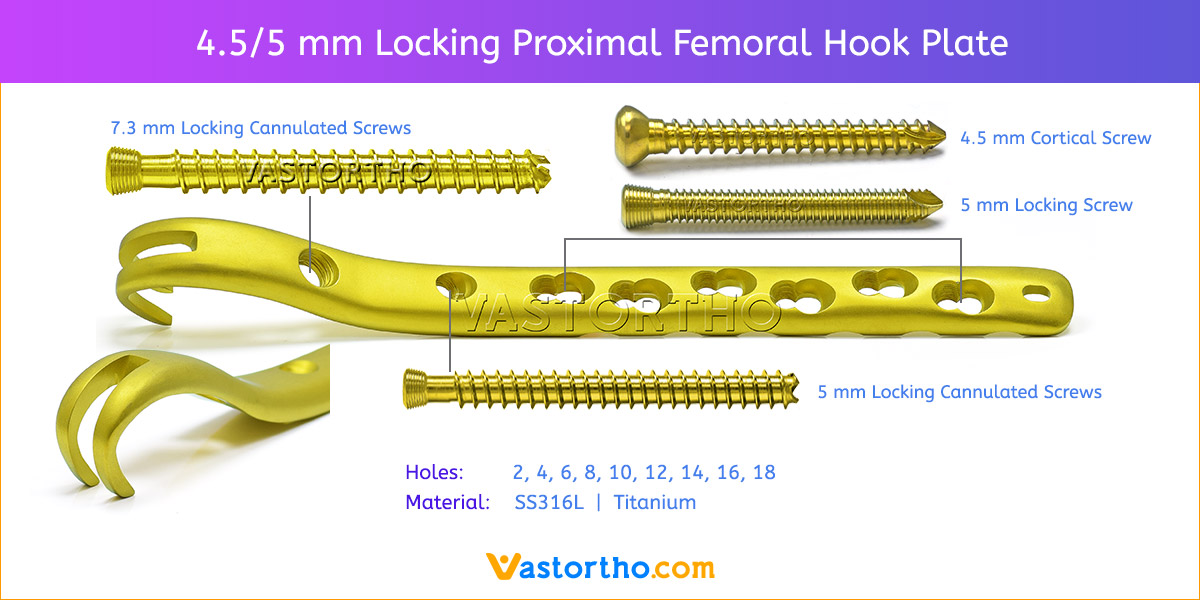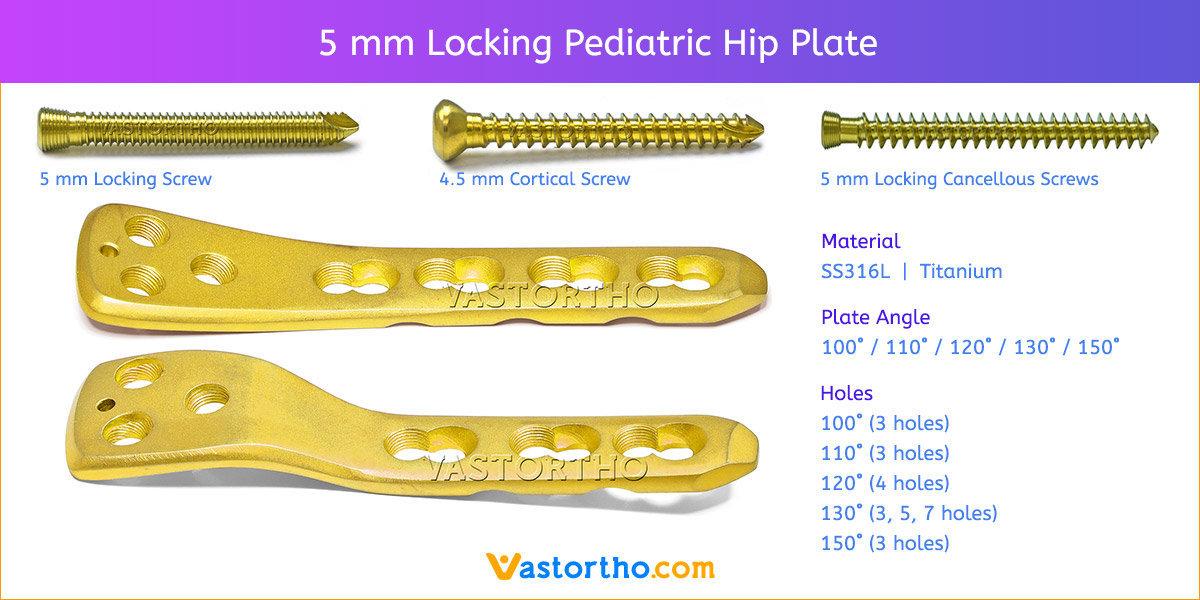4.5/5 mm Locking Reconstruction Plate Curved Specification, Uses, Sizes & Surgical Instruments.

4.5/5 mm Locking Reconstruction Plate Curved Specification
- Plates available holes are 4, 5, 6, 7, 8, 9, 10, 12, 14, 16, 18 and 20.
- Plate has combi holes and round holes. Combi holes allow fixation with locking screws in the threaded section and cortex screws in the dynamic compression unit section for compression.
- The shaft holes accept 5 mm locking screws in the threaded portion or 4.5 mm cortical screws or 5 mm Locking cancellous screws in the compression portion.
- 4.5/5 mm Locking Reconstruction Plate Curved allow implant placement to address the individual fracture pattern.
- The symmetrical shape of the plate holes enables compression to be achieved in both directions.
- The hole spacing in the plate is regular. Plate positioning is thus not restricted by the presence of a mid-section. This is of particular advantage in comminuted or segmental fractures.
- Limited-contact surface reduces bone-to-plate contact and helps to preserve the periosteal blood supply.
- Choice of different lengths of plate eliminates the need to cut plates.
- Pre-contoured plate to match anatomical shape.
- Available in both Titanium and Stainless steel.
- locking plate increases construct stability, decreases risk of screw back-out and subsequent loss of reduction. It also reduces the need for precise anatomic plate contouring and minimizes the risk of stripped screw holes.
- A complete Instruments Set is available for 4.5/5 mm Locking Reconstruction Plate Curved. General Instruments are available for this plate such as Plate Bending Press, Plate Holding Forceps, Plate Bending Pliers, Bone Holding Forceps, Bone Elevators, Bone Cutter, Bone Nibbler, Depth Gauge, Sleeve, Screw Driver, Trocar Sleeve etc.
4.5/5 mm Locking Reconstruction Plate Curved Uses
4.5/5 mm Locking Reconstruction Plate Curved is used to fix the Pelvic, Clavicle and Calcaneal fractures.


